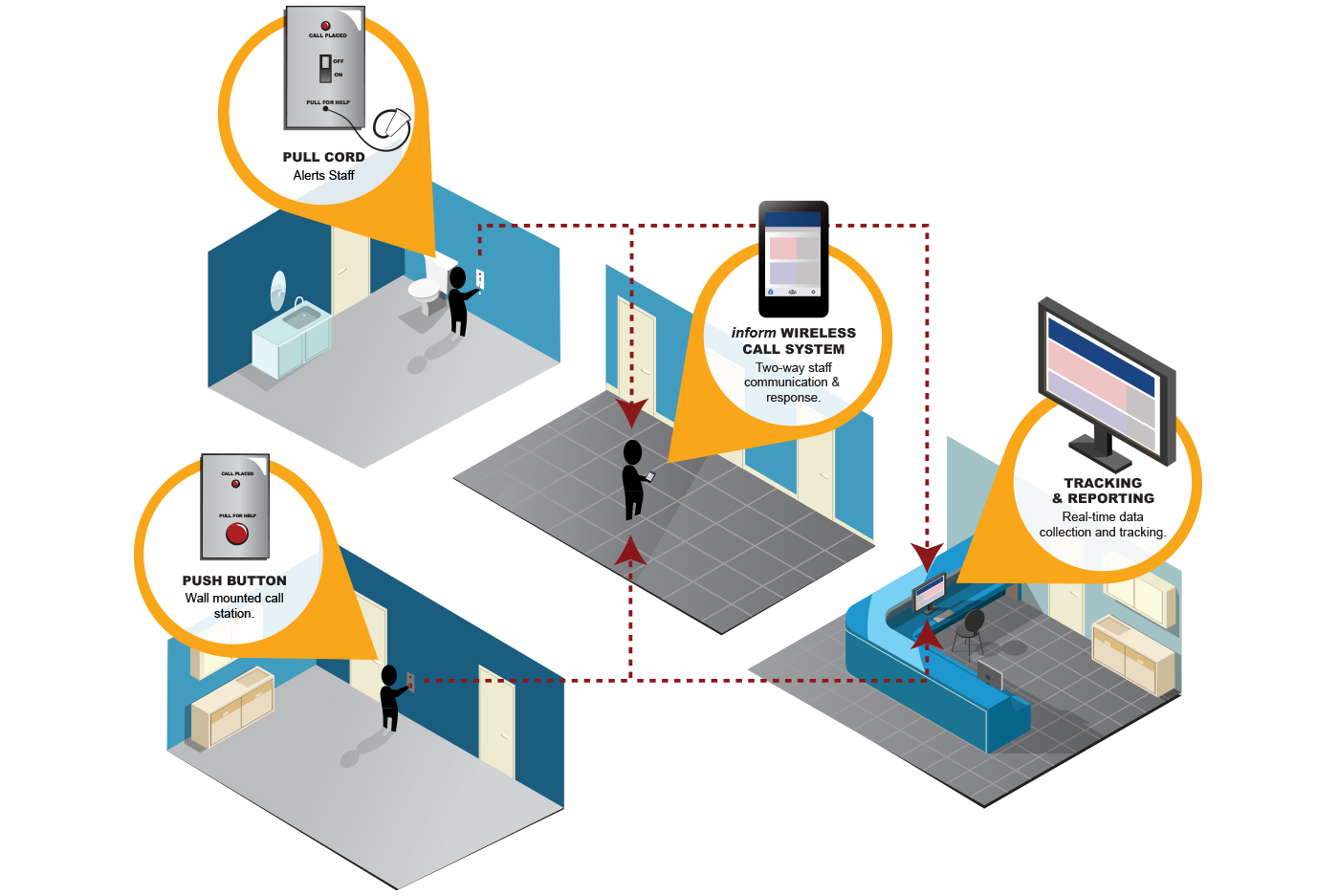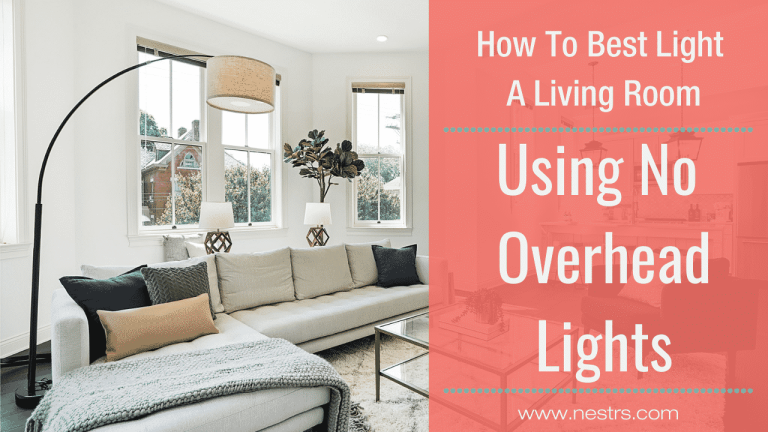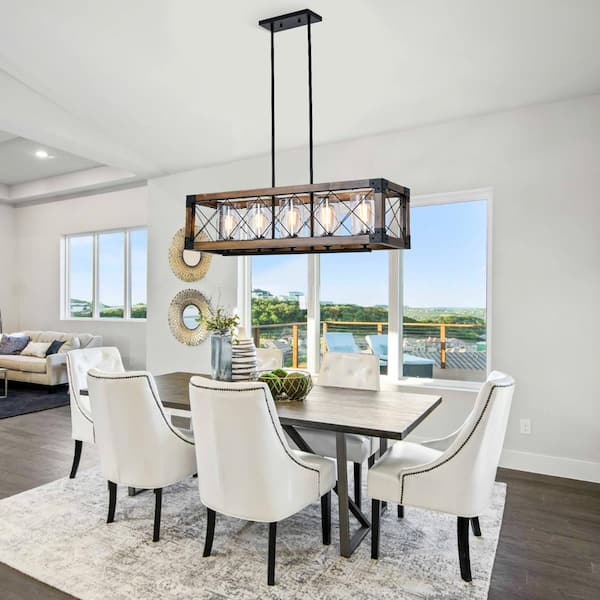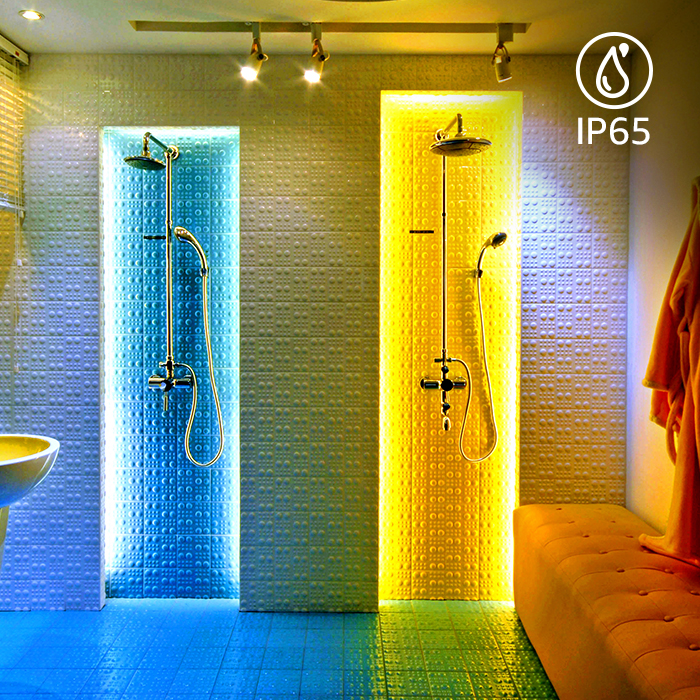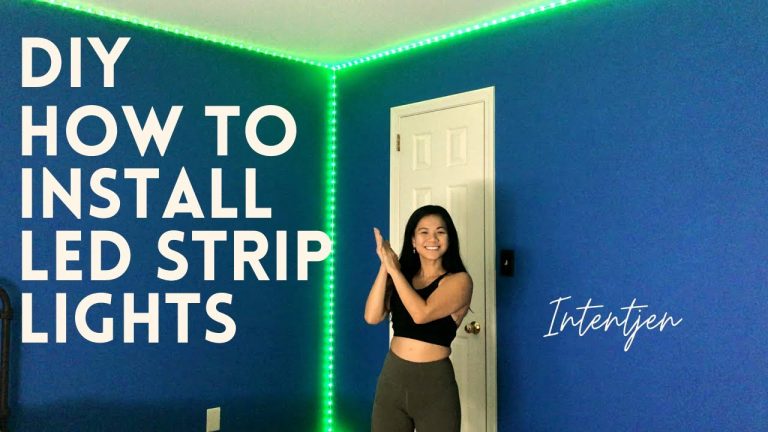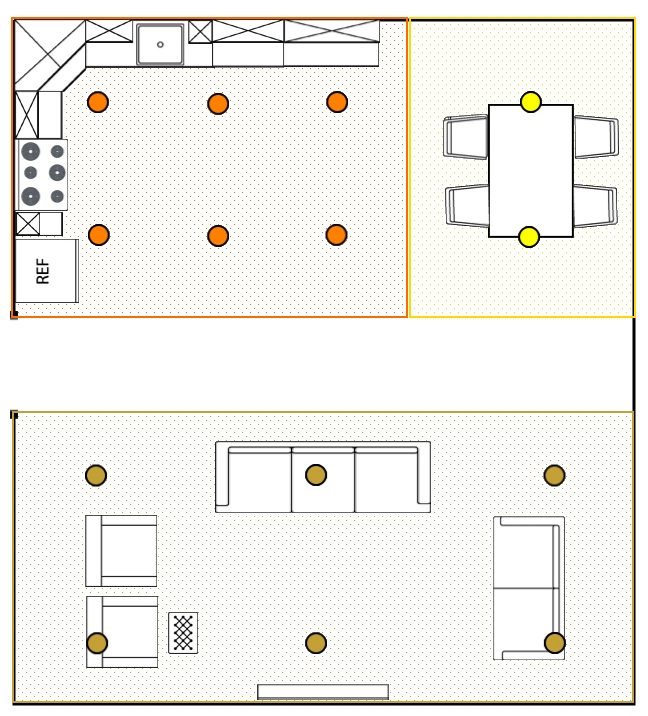Where Should Call Lights Be Placed?
Where should call lights be placed? Call lights should be placed within easy reach of the patient, typically on the bed rail or bedside table in hospitals or care facilities. In bathrooms, they should be installed near the toilet and in the shower area to ensure quick access during emergencies.
The placement of call lights in residents’ rooms can make a world of difference for their safety and peace of mind. Whether you’re a caregiver, a facility manager, or someone concerned about a loved one, understanding where to place these vital tools can impact the quality of care provided.
This isn’t just about convenience; it’s about ensuring timely assistance and fostering a sense of security. Dive into this article to discover the best practices for call light placement, and make sure your residents are always just a button away from the help they need.

Credit: www.amli.com
Where Should Call Lights Be Placed
Importance Of Call Light Placement
The placement of call lights in residents’ rooms is crucial. It ensures quick response times in emergencies. Proper placement can significantly improve the quality of care. It also enhances residents’ sense of security and independence. Call lights must be accessible to residents at all times. This ensures they can easily reach help when needed.
Accessibility For Residents
Call lights should be within easy reach of residents. This is especially important for those with limited mobility. Placing call lights near the bed or chair is ideal. This makes it easy for residents to signal for help. Ensuring accessibility prevents unnecessary stress for residents.
Enhancing Safety And Independence
Proper placement of call lights helps enhance resident safety. It allows residents to feel more independent. They can call for assistance without leaving their position. This reduces the risk of falls or accidents. A well-placed call light promotes a safer living environment.
Quick Response Times
Call lights placed strategically improve response times. Staff can attend to residents’ needs promptly. This is vital during emergencies or urgent situations. Quick response can prevent minor issues from escalating. It ensures residents receive timely care and attention.
Minimizing Staff Workload
Efficient call light placement can reduce staff workload. It decreases unnecessary trips to resident rooms. Staff can respond only when needed. This allows them to focus on other tasks. It improves overall workflow and efficiency in care facilities.
Factors Influencing Placement
When placing call lights in residents’ rooms, several factors need consideration. Proper placement ensures residents can easily access help. It also enhances safety and comfort. The following factors play a crucial role in deciding the best location for call lights.
Accessibility
Call lights must be within easy reach for all residents. This is especially important for those with mobility issues. Placing call lights near the bed or chair is advisable. It ensures residents can call for help without strain.
Visibility
The call light should be clearly visible. Residents must easily spot it at all times. This minimizes confusion and ensures quick access during emergencies. Bright colors or lights can enhance visibility.
Ease Of Use
Call lights should be simple to operate. Complicated systems can be challenging for some residents. A straightforward push-button design is often the best choice. This ensures residents can call for help without difficulty.
Safety
The placement should not interfere with room safety. Avoid placing call lights where they might cause trips or falls. Secure all cords and wires to prevent hazards. Safety should always be a priority in placement decisions.
Room Layout
The room’s layout influences call light placement. Consider furniture arrangement and resident movement. Ensure the call light remains accessible from multiple points. This offers flexibility and convenience for residents.
Optimal Locations In Patient Rooms
Call lights in residents’ rooms should be within easy reach from the bed. Placing them on the bedside ensures quick access. This positioning helps residents call for assistance easily, enhancing safety and response times.
Finding the optimal location for call lights in patient rooms is crucial for ensuring patient safety and satisfaction. Imagine a scenario where a patient needs immediate help but struggles to reach the call light. It’s not just an inconvenience—it could be a matter of life and death. By placing call lights strategically, you can enhance the response time of caregivers, reduce anxiety for residents, and foster a sense of security. Let’s delve into the best spots in a resident’s room for these essential devices.
Near The Bedside
The bedside is one of the most logical places for a call light. Most patients spend a significant amount of time in bed, especially at night. Having the call light within arm’s reach allows them to summon assistance without moving too much, which is particularly important for those with limited mobility.
Within Reach Of Seating Areas
Consider placing call lights near seating areas like chairs or sofas. Residents often spend time here during the day, reading or watching TV. A call light in this area ensures they can ask for help without having to get up, preventing potential falls or accidents.
In The Bathroom
Bathrooms are a common site for accidents due to slippery surfaces and limited space. Installing a call light here can be a game changer. It offers residents the ability to call for help if they feel unsteady or need assistance with daily tasks, providing peace of mind.
Accessible From The Floor
Accidents happen, and sometimes residents might find themselves on the floor. In such cases, a call light that can be reached while on the ground is invaluable. This accessibility ensures they can call for help without needing to get back up, minimizing further injury.
Consideration For Special Needs
Every resident is unique, and some might have special needs. Think about those with vision impairments or cognitive challenges. You might need to install larger buttons or tactile guides to ensure everyone can use the call light efficiently. Have you ever considered how a simple change in the placement of call lights could drastically improve a patient’s quality of life? By taking these factors into account, you create a safer, more responsive environment that empowers residents to feel secure and cared for. So, where will you place your call lights to make the most impact?
Call Light Accessibility In Common Areas
Call light accessibility in common areas is crucial for resident safety. Residents need to communicate easily with staff. Proper placement of call lights ensures quick assistance. This can improve the quality of care and enhance resident satisfaction. Understanding the best locations for call lights is essential for efficient facility management.
Call Light Placement In Hallways
Hallways should have call lights at regular intervals. This ensures residents can reach them easily. Staff can respond quickly to any call from residents. Bright and visible call lights are more effective. They catch attention easily and ensure prompt action.
Call Light Accessibility In Lounges
Lounges are common gathering places. Call lights here should be within arm’s reach. Residents often relax and socialize in lounges. Having call lights accessible ensures they feel safe. This promotes a comfortable environment for everyone.
Call Lights In Dining Areas
Dining areas need strategically placed call lights. Residents may need assistance during meals. Accessible call lights ensure timely help. They are critical for residents with mobility challenges. Proper placement can prevent accidents and enhance dining experiences.
Call Lights Near Restrooms
Restrooms should have easily reachable call lights. They are vital in case of emergencies. Residents must feel secure and supported. This is especially important for those with limited mobility. Ensuring call light accessibility can provide peace of mind.
Technological Innovations In Call Systems
Technological innovations are reshaping how call systems function in residents’ rooms. These advancements not only enhance the efficiency of communication but also aim to improve the quality of life for residents. As technology evolves, so does the potential for creating safer and more responsive environments in healthcare facilities.
Understanding Smart Call Systems
Smart call systems are revolutionizing the way residents communicate with caregivers. They integrate advanced features like voice activation and mobile app connectivity. Imagine how much easier it becomes for residents to request assistance with just a simple voice command.
These systems can be customized to meet individual needs, ensuring a personal touch in care. You can adjust settings for specific alerts, making it easier to prioritize urgent requests. This customization allows caregivers to respond promptly, addressing the unique needs of each resident.
Wireless Call Systems: A Game Changer
Wireless call systems eliminate the limitations of wired setups, offering greater flexibility. They allow for easy installation without the need for extensive cabling, making them ideal for rooms with challenging layouts. Have you ever wondered how much time and effort could be saved by just avoiding complex wiring?
These systems can be moved or adjusted without hassle, ensuring that call buttons are always within reach for residents. This adaptability enhances safety and convenience, especially for those with mobility issues.
Integration With Iot Devices
IoT (Internet of Things) devices are making call systems smarter and more connected. They allow for seamless integration with other technology in a resident’s room, like smart beds and lighting. Imagine a scenario where the lights automatically adjust when a resident presses the call button.
This interconnectivity enables caregivers to monitor multiple aspects of a resident’s environment remotely. You might find it fascinating how these devices can provide data insights, helping improve care strategies and outcomes.
Enhancing Accessibility Through Technology
Technological advancements are bridging the gap between residents and caregivers, making communication more accessible. Features like touchscreens and voice control cater to various accessibility needs. Consider how empowering it is for residents to have control over their environment with a simple touch or voice command.
These innovations ensure that no resident is left struggling to communicate their needs. The focus on accessibility is crucial, especially in environments where every second counts.
Do you see the potential of these technological innovations in transforming resident rooms? As technology continues to evolve, the possibilities for improving care and safety are endless. Which innovation do you think will make the most significant impact in the coming years?

Credit: thetimbersalf.com

Credit: wordmint.com
Frequently Asked Questions
Where Is The Best Spot For Call Lights?
Call lights should be near the bed for easy access. This placement ensures residents can reach them quickly in emergencies.
Should Call Lights Be Reachable From The Floor?
Yes, call lights should be accessible from the floor. This helps residents use them if they fall and need assistance.
Do Call Lights Need To Be In Bathrooms?
Absolutely, call lights should be in bathrooms. They provide safety for residents when they need help while using the facilities.
Conclusion
Placing call lights within easy reach ensures residents’ safety and comfort. This simple change can greatly improve their quality of life. Staff can respond quickly to emergencies. Residents feel more secure and independent. Proper placement reduces falls and accidents. It’s a vital step in providing excellent care.
Consider each room’s layout for the best results. Engage staff and residents in the discussion. Their input is invaluable. Ultimately, well-placed call lights enhance trust and communication. Small adjustments make a big difference. Prioritize resident needs for the best outcomes.
Related Article
